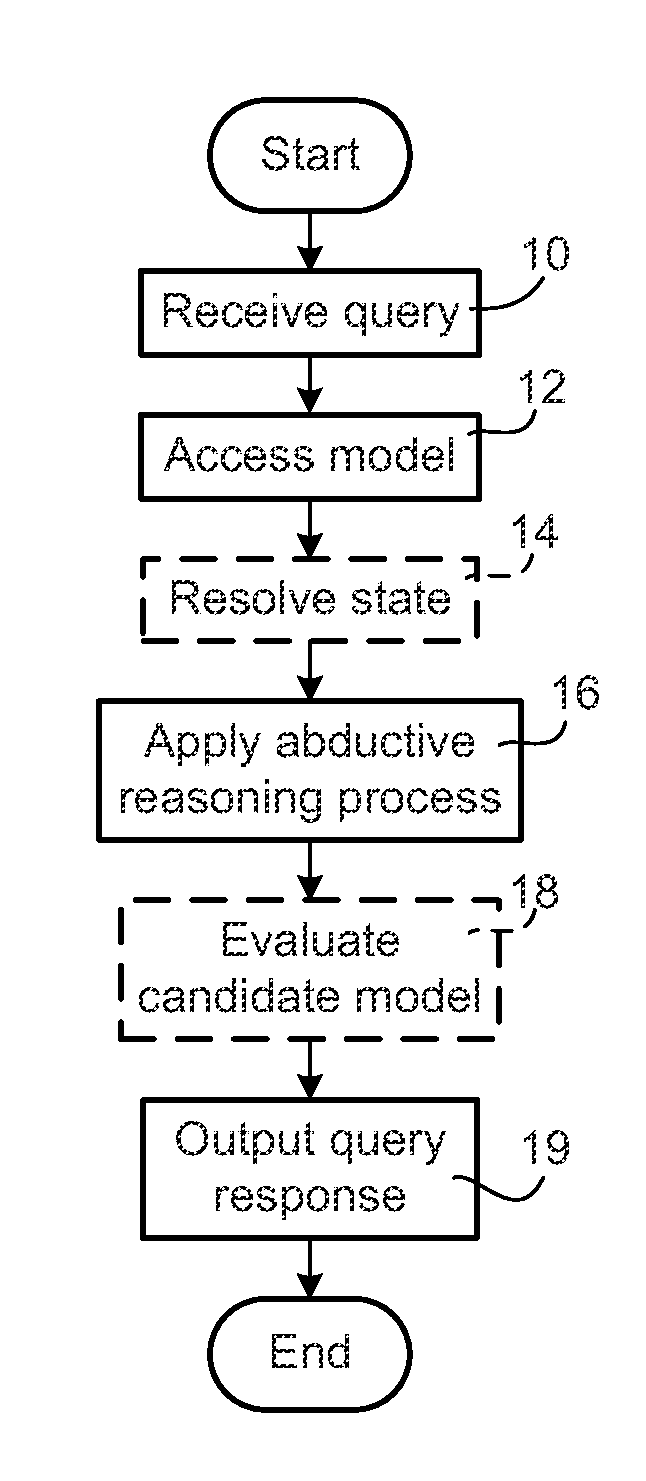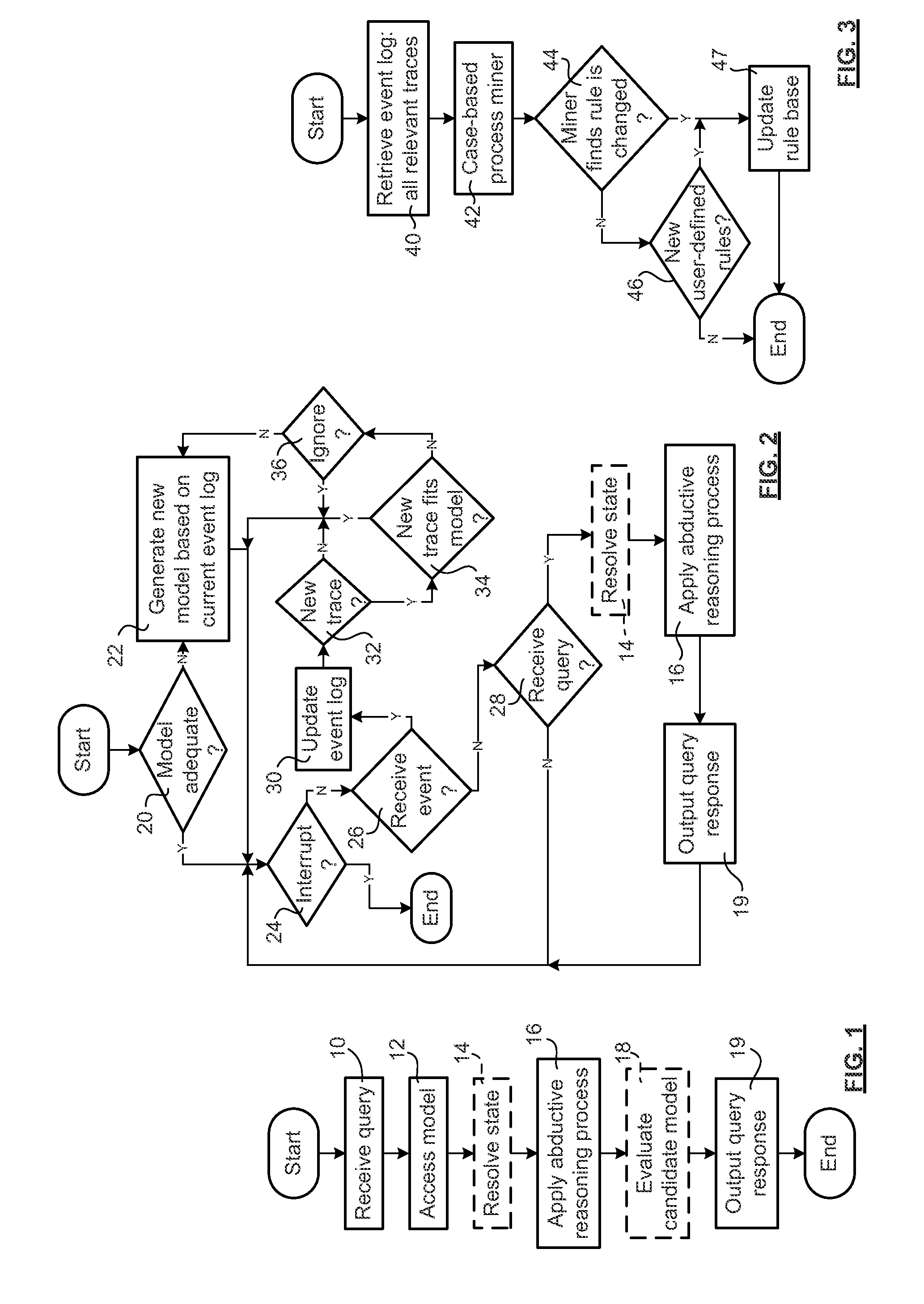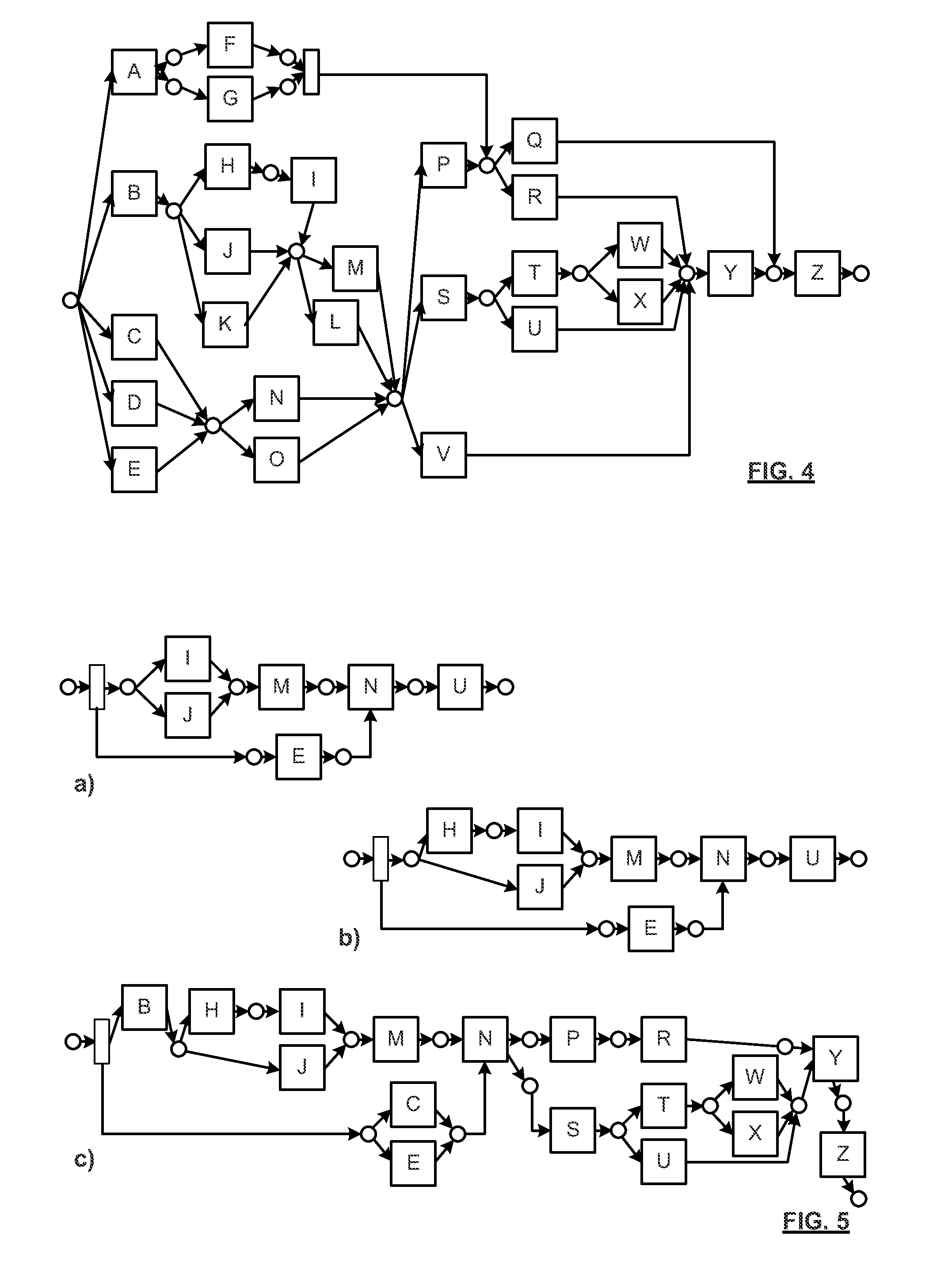Process mining for anomalous cases
a technology for anomalous cases and process mining, applied in the field of process mining, can solve the problems of containing more errors, causing an unnecessarily large number of false alarms, and affecting the overall accuracy of process models,
- Summary
- Abstract
- Description
- Claims
- Application Information
AI Technical Summary
Benefits of technology
Problems solved by technology
Method used
Image
Examples
example
[0043]Consider an event log consisting of the following set of traces, where each uppercase letter represents a respective task:
AFGRYZAGFRYZBHIMPRYZBJMPQZBKMPRYZBKLPRYZBKLVYZCNSTWYZCNPRYZCNSUYZCOPQZCOVYZDOPQZDOSTWYZDOVYZENSTXYZ.
[0044]A typical process mining algorithm generates a process model from these traces having similar content to the Petri net shown in FIG. 4, although some variation is expected depending on the specific algorithm used to generate the model. The illustrated Petri net has a currently desirable form having no redundant tasks, and no extraneous arcs, places, or transitions. It will be noted that the joint requirements for F and G, with no preference for order is represented by the dummy transition having two input places succeeding F and G, and that the remainder of the arcs are serial (single token input, single token output).
[0045]It will further be noted that the Petri net does generalize on, and mask some specific features of, the event log. For example, the...
PUM
 Login to View More
Login to View More Abstract
Description
Claims
Application Information
 Login to View More
Login to View More - R&D
- Intellectual Property
- Life Sciences
- Materials
- Tech Scout
- Unparalleled Data Quality
- Higher Quality Content
- 60% Fewer Hallucinations
Browse by: Latest US Patents, China's latest patents, Technical Efficacy Thesaurus, Application Domain, Technology Topic, Popular Technical Reports.
© 2025 PatSnap. All rights reserved.Legal|Privacy policy|Modern Slavery Act Transparency Statement|Sitemap|About US| Contact US: help@patsnap.com



